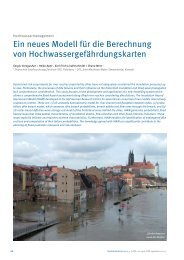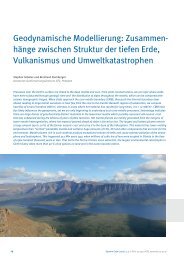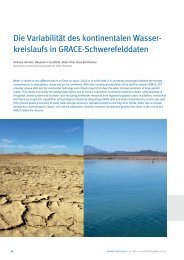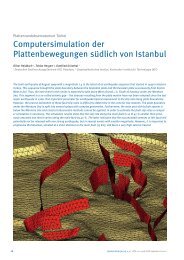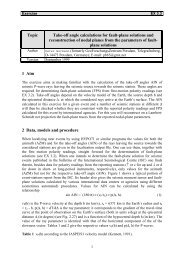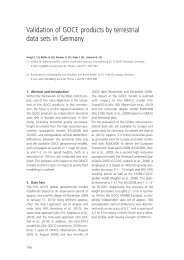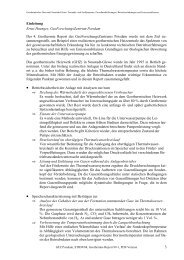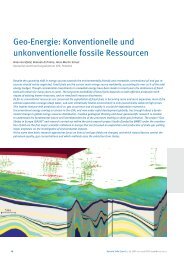2 Seismic Wave Propagation and Earth models
2 Seismic Wave Propagation and Earth models
2 Seismic Wave Propagation and Earth models
You also want an ePaper? Increase the reach of your titles
YUMPU automatically turns print PDFs into web optimized ePapers that Google loves.
2. <strong>Seismic</strong> <strong>Wave</strong> <strong>Propagation</strong> <strong>and</strong> <strong>Earth</strong> <strong>models</strong><br />
Fig. 2.26 Ray through a multi-layered model with constant velocity within the layers but<br />
increasing velocity with depth of the layers. The ray angle i increases accordingly with depth.<br />
This can be generalized by modeling a velocity gradient with depth as a stack of many thin<br />
layers with constant velocity. Rays <strong>and</strong> travel times for this case are sketched in Fig. 2.27.<br />
The plot of arrival times t versus distance x is generally called the travel-time curve. The<br />
tangent dti/dxi on the travel-time curve at any distance xi corresponds to the inverse of the<br />
horizontal wave propagation velocity 1/vappi <strong>and</strong> thus to the ray parameter pi of that ray which<br />
comes back to the surface at xi. Because of sin i = sin 90° = 1 at the turning point of the ray,<br />
we can determine the velocity vtp at the turning point of the ray either from the gradient of the<br />
travel-time curve at xi via pi = dti/dxi = 1/vtp or by knowing the sub-surface velocity voi at<br />
station xi <strong>and</strong> measuring the incidence angle ioi at that station (vtp = voi /sin ioi).<br />
Fig. 2.27 Raypaths (middle) <strong>and</strong> travel-time curve (right) for a model with velocity v<br />
gradually increasing with depth z (left). The incidence angle i increases continuously until it<br />
reaches 90°at the turning point tp, then the rays turn up again to reach the surface at xi. On the<br />
travel-time curve each point comes from a different ray with a different slowness <strong>and</strong> ray<br />
parameter p. The gradient of the tangent on the travel time curve at xi is the ray parameter pi =<br />
dti/dxi. In the considered case of modest velocity increase with depth the distance x increases<br />
with decreasing p. The related travel-time curve is termed prograde.<br />
2.5.3.2 Effect of a sharp velocity increase<br />
Next we consider the effect of a sharp velocity increase, which may be an increase in gradient<br />
(second-order discontinuity) or an instantaneous velocity jump (first-order discontinuity). Fig.<br />
28



